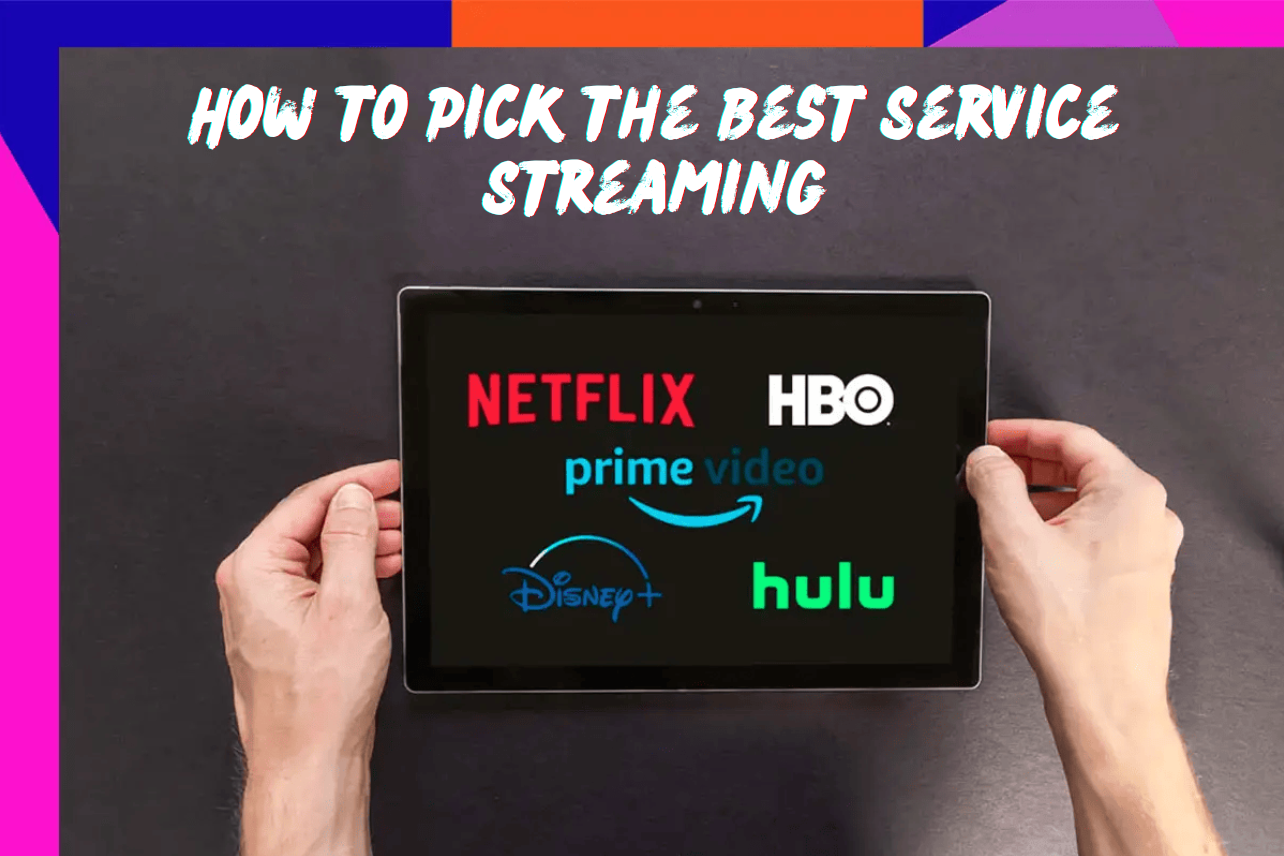10 Smart Strategies to Save on Your Internet Provider Choice
In today's world, having good internet at home is as vital as having lights or water. Whether it's for job, education, entertainment, or just chatting with friends, we rely on the internet. But, the cost of the internet is high, making it challenging for many families to keep up. Finding ways to save money on internet bills without giving up on a good connection is essential.
Let's pick an internet service that's both good and doesn't cost too much. There are intelligent ways to do this. We can look at different prices, find special deals, and choose plans that fit our needs. This blog will share ten great tips to help you cut down your internet bill. You may significantly reduce your monthly payment amount by following these simple recommendations.
Trusted10.io is here to help you make smart choices about spending money, especially regarding internet service. We look at all the deals and advice to find the best ways to save online. This blog has good ideas to help you spend less on your internet service so you have more money for other things. Let's dive into these ten tips and start saving today!
Strategy 1: Compare Plans and Providers
There is no "one size fits all" solution for internet service. That's why comparing plans and providers is a crucial first step to saving on your internet bill. This process involves looking at all the internet service providers (ISPs) available in your area and evaluating what they offer regarding speed, data limits, and price. It's like shopping for the best deal on a new phone or car; you want the best quality for the lowest price.
Step-by-Step Guide:
- List Available ISPs: List all the internet providers in your area.
- Gather Plan Details: Note down the specifics of each plan, such as speed, data caps, and monthly costs.
- Read Up on Reviews: Look for customer feedback online to see how reliable each ISP is.
- Explore Bundles: Check for deals bundling internet with TV or phone services.
- Reach Out for Offers: Contact the ISPs for current promotions or discounts.
Pros and Cons:
Pros:
Adjusts your internet plan based on your demands, so you don't pay for extras you won't use.
Identifies the most cost-effective plans, potentially saving you money each month.
Informs you about the quality of the ISP's customer service through reviews.
Offers a clear overview of what's available, helping you make an informed choice.
Cons:
It can be time-consuming to research and compare all the options.
Baffled by the sheer volume of data and technical jargon.
You may find limited choices in certain areas, particularly rural ones.
Promotional deals might have hidden conditions that take time to be apparent.
Plan offerings and prices can change often, requiring regular re-evaluation.
Real-life Example:
- Situation: Sarah wanted to lower her internet bill without sacrificing speed.
- Action: She listed all the ISPs in her area, compared their plans, read customer reviews, and inquired about bundle deals.
- Outcome: Sarah found a plan that was $30 cheaper than her current one, with the same internet speed and better customer service.
- Benefit: Not only did Sarah reduce her monthly expenses, but she also enjoyed a more reliable internet connection, enhancing her online experience.
Strategy 2: Negotiate with Providers
Negotiating with your internet provider might sound daunting, but it's a surprisingly effective strategy for lowering monthly internet costs. Many people don't realize that internet service prices aren't set in stone; providers often have flexibility, especially if they want to retain loyal customers. Armed with the right approach, you could unlock discounts or improved service terms previously off the table.
Step-by-Step Guide:
- Know the Deals: Start by discovering any new customer deals or promotions your ISP offers.
- Build Your Case: Gather details about your account history, such as how long you've been with the provider and your payment consistency.
- Make the Call: Contact your ISP's customer service to discuss your account and express your desire for a better rate.
- Stay Courteous Yet Firm: Keep the conversation friendly, but be clear about your request.
- Consider the Offer: Look closely at any new terms or rates the provider offers you.
Pros and Cons:
Pros:
- It opens up the possibility of lowering your monthly internet bill.
- You might be eligible for exclusive discounts or upgraded plan capabilities.
- Customize your plan to fit better how you use the internet.
- Talking with your provider can improve your relationship and lead to better service.
- It puts you in control, actively seeking the best value for your service.
Cons:
- There's no assurance that a better bargain will be reached via discussion.
- Getting through to someone who can make changes can take time and persistence.
- It might not work if there aren't any special deals or your account doesn't qualify.
- You could agree to a new contract term for a better deal.
- Some ISPs are less flexible and may offer little room for negotiation.
Real-life Example:
- Before the Call: Alex noticed his internet bill creeping up over the past few months.
- During the Call: He called his ISP praised their service, but mentioned he was considering other options due to the cost.
- The Result: The ISP offered him a 20% discount for the next six months to keep him as a customer.
- After the Call: Alex's initiative to negotiate saved him over $100 across the six months, and he was more satisfied knowing he was getting a better value.
Strategy 3: Consider Bundle Deals
Anyone trying to save money and simplify their services could do well to check into bundle offerings. These deals typically combine internet, TV, and phone services into one package from a single provider. It's like getting a discount at a store for buying more items together instead of just one; the more services you bundle, the more savings you might see on your overall bill.
Step-by-Step Guide:
- Look for Bundles: Check which providers offer bundle deals in your area.
- Do the Math: Compare the cost of each service separately versus the bundle price to see your potential savings.
- Check Service Quality: Ensure the internet speeds and TV channels meet your needs.
- Read the Terms: Understand the contract, like how long you need to keep the service and if there are any cancellation fees.
- Decide: Pick the bundle that saves you the most money and offers the services you use.
Pros and Cons:
Pros:
- It can save you much money compared to buying each service separately.
- Managing one bill for all your services is more manageable than handling multiple bills from different providers.
- It could get you better features or upgrades since you're buying more from the provider.
- Sometimes, it comes with perks like free installation.
Cons:
- It might end up with services you don't need because they're part of the bundle.
- You might have to renegotiate the whole bundle if you want to change one service.
- It could be more accessible to switch providers later if you're not happy.
- Contracts of one year or more are often required to get the cheapest prices.
Real-life Example:
- Situation: Mike paid separately for his internet, cable, and home phone.
- Action: He found a bundle deal that included all three services for a lower total cost.
- Outcome: Mike started saving $25 monthly by switching to the bundle.
- Benefit: Besides the savings, Mike appreciated the convenience of dealing with just one bill and one customer service for all his needs.

Strategy 4: Downgrade Your Plan
Sometimes, saving money on your internet bill can be as simple as choosing a less expensive plan. Many of us sign up for high-speed internet plans thinking we'll need all that speed, but often, we use the internet less than we thought. By looking at how much internet you use, you might find that a cheaper, lower-speed plan is all you need.
Step-by-Step Guide:
- Check Your Use: Determine your monthly internet use. Are you paying for high speeds you don't need?
- Talk to Your Provider: Call your internet company for cheaper plans that still meet your needs.
- Look at All Options: Compare the lower-cost plans' speeds and prices to find the best deal.
- Think About Other Companies: See if other internet providers offer a better deal for the same service.
- Decide Wisely: Pick the plan that gives you enough internet speed for your daily activities without overpaying.
Pros and Cons:
Pros:
- You could start seeing lower internet bills right away.
- By tailoring your internet package to your specific needs, you may save money.
- If you ever find yourself in need of a quicker plan, you may always revert to it.
- Getting rid of extras you don't use can make your bill simpler and cheaper.
Cons:
- You might notice slower internet speeds, especially if you stream many videos or have multiple people online.
- Some internet companies might have few options for cheaper plans.
- Changing your plan might come with fees, or you might lose a special deal you had before.
- You could go over your plan's data limit and pay extra if you are careless.
Real-life Example:
- Before: Emma was paying for a top-tier internet plan but mainly used it for browsing and streaming shows.
- Change: She talked to her provider and switched to a plan that was $15 cheaper but still met her needs.
- After: Emma didn't notice a difference in her internet use but was happy to see her bill go down.
- Benefit: Emma's money went into her savings account, adding to significant savings over the year.
Strategy 5: Look for Promotions and Discounts
Finding deals and special offers from internet companies is a smart way to pay less for your internet. These companies often have special prices for new customers or say "thank you" to their current customers with discounts. Sometimes, during holidays or special times of the year, they might offer even better deals.
Step-by-Step Guide:
- Look for Deals: Keep an eye on ads or websites for any special internet deals.
- Welcome Offers: If you're new to an internet company, they might give you a cheaper price at the start.
- Ask for a Thank-You Discount: If you've been with your internet company for a long time, see if they'll give you a lower price to say thank you.
- Seasonal Sales: Occasionally, businesses run sales in honor of holidays or other special occasions.
- Compare Deals: Check out what different companies are offering to find the best deal for you.
Pros and Cons:
Pros:
- Special prices can make your internet bill cheaper for a while.
- Saying thank you to loyal customers can mean extra savings for you.
- Holiday deals can be a great time to save money.
- Looking at different deals helps you find the best one.
Cons:
- After the special price ends, your bill might go up.
- Not all deals are available everywhere; it depends on where you live.
- You might need to stick with your company longer to get a thank-you discount.
- Maintaining tabs on all the various sales may be a real pain.
Real-life Example:
- Looking Around: Alex saw an ad for a cheaper internet deal from another company.
- Talking to His Company: He called his own internet company and told them about the ad.
- Getting a Deal: They gave him a discount to keep him as a customer.
- Happy Ending: Alex saved $30 on his internet bill for the next year because of the deal.
By looking for and using these special deals, you can save money on your internet service, making it a great tip for anyone wanting to lower their monthly bills.
Strategy 6: Examine Your Internet Bill
Taking a closer look at your internet bill can be eye-opening. It's about understanding what you're paying for every month. Sometimes, there are charges or services on your bill that you might not need, or errors could add extra costs. You can spot these and lower your monthly payment by understanding your bill.
Step-by-step Guide:
- Collect Your Bills: Keep your last few internet bills handy for review.
- Break Down the Charges: Look at each charge on your bill to see what you're paying for, like internet speed or equipment rental.
- Check Your Data Use: See how much data you use monthly to ensure you're paying for what you need.
- Look at Other Options: See what other internet companies charge for similar services to ensure you get a good deal.
- Ask Questions: Contact your internet service provider to inquire about any costs you are unsure about.
Pros and Cons:
Pros:
- Each month, you will have a clear understanding of what you are paying for.
- One way to discover a better bargain is to compare pricing.
- Staying with your existing employer gives you the best bargaining power.
- Learning about promotions or discounts can save you money.
Cons:
- It takes time to go through bills and compare prices.
- You might find charges you must be aware of, which can be frustrating.
- Discussing your bill with your provider might be challenging if there are disputes.
Real-Life Example:
- Bill Review: Sarah reviewed her last three internet bills to understand her monthly charges.
- Data Plan: She noticed she was paying for more data than she used.
- Equipment Cost: Sarah found out she was paying monthly for a modem and router, so she decided to buy her own and save that monthly fee.
- Comparing Deals: She looked at what other internet companies offered to make sure she had a good deal.
- Questioning Charges: When Sarah saw a charge she didn't understand, she called her provider and discovered it was a mistake, which they removed.
By understanding your internet bill, you can ensure you're only paying for what you need and possibly find ways to reduce your monthly costs.
Strategy 7: Consider Using Your Own Equipment
Switching to your modem and router instead of renting from your internet provider is a smart move that can save you money each month. Many of us need to realize that the small rental fee on our bill adds up over time. Buying your equipment can reduce this recurring charge and improve your internet experience.
Step-by-step Guide:
- Check Your Bill: Look at your latest internet bill to see how much you pay monthly to rent a modem and router.
- Find the Right Equipment: Research how much it would cost to buy a modem and router that match your internet plan's needs.
- Do the Math: Work out how long it will take for the savings from not paying rental fees to cover buying your equipment.
- Choose Wisely: Compare different brands and models to find reliable equipment with good reviews.
- Set It Up: Decide whether you'll set up the equipment yourself or need help.
Pros and Cons:
Pros:
- Terminates the ongoing rental cost, which ultimately saves you money.
- It lets you pick high-quality equipment that might work better than what you were renting.
- Over time, owning your equipment can be cheaper than renting, especially if you keep it for a few years.
- You can use the same equipment even if you switch to a different internet provider.
Cons:
- You'll need to pay upfront to buy your modem and router.
- If you're uncomfortable setting it up, you might need to pay for installation.
- You're responsible for fixing any issues with your equipment.
- Technology changes fast, so you need to update your equipment.
Real-Life Example:
- Rental Fees: Tom paid $10 monthly to rent his modem and router.
- Buying Equipment: He found a suitable modem and router for $100.
- Savings: Tom saved $120 in the first year alone by buying his equipment.
- Making a Choice: After reading reviews, Tom chose a modem and router that were highly rated for reliability and performance.
- DIY Setup: Tom set up the new equipment independently, avoiding extra setup fees.

Strategy 8: Bundle Your Broadband
Combining your broadband internet with other services like TV and phone into one package can be a smart way to save money and simplify your bills. Many service providers offer these "bundle" deals, giving you a discount for getting multiple services from them instead of just one.
Step-by-Step Guide:
- Look for Bundle Deals: Start by seeing what bundle packages are available from different providers in your area.
- Think About What You Need: Decide which services you need. Do you watch much TV, or could you do without it? Do you need a home phone?
- Compare Prices: Check how much you would pay for each service separately, and then compare it to the bundle price to see if you're saving money.
- Look for Special Offers: Sometimes, providers have special deals on bundles that can save you even more.
- Sign Up: If you find a bundle that fits your needs and budget, you can usually sign up online or over the phone.
Pros and Cons:
Pros:
- Bundles can give you a better price than getting each service.
- Dealing with just one bill for several services can make things simpler.
- You might get extra perks like free setup or an equipment upgrade.
- Bundles can lead to significant savings over time.
Cons:
- You might end up with services you don't use because they're part of the bundle.
- It is possible that the current sale price is temporary and will eventually go up.
- Prolonging the duration of your agreement may be necessary.
- Making a little adjustment to your package might have a major impact on the overall price.
Real-Life Example:
- Bundle Search: John checked out bundles from his internet company, including TV and phone services.
- Saving Money: By putting all the services together, John found he could save $30 a month instead of paying each separately.
- Special Deal: He also took advantage of a promotional offer that made the first six months cheaper.
- Making the Switch: John decided the bundle was the right choice for him and enjoyed the convenience and savings of having all his services from one provider.
Strategy 9: Negotiate with Your Internet Provider
If you want to negotiate a lower rate with your internet provider (ISP), you should talk to them about it. Many people need to realize this, but providers often have special discounts or unadvertised offers. By negotiating, you could lower your bill or get more for what you're paying.
Step-by-Step Guide:
- Find Deals: Before calling, look at your ISP's promotions or deals.
- Make Your Case: Think about why you should get a better deal. You've been a loyal customer or seen better offers from other companies.
- Call Customer Service: Contact the customer service team and tell them you want to discuss your plan and pricing.
- Be Nice but Firm: It's essential to be polite when you ask for a better deal, but you must also be clear about what you want.
- Look at the New Offer: If they give you a new deal, consider it and make sure it's better for you.
Pros and Cons:
Pros:
- You can save money every month.
- You could get access to special deals that are only available to some.
- It's an opportunity to make your internet plan fit your needs better.
- Talking to your provider can make your relationship with them more robust.
- This puts the power to get the most bang for your buck in your hands.
Cons:
- Sometimes, you might not be able to get a better deal.
- Negotiating with your provider could be a tedious and time-consuming process.
- If there are current deals, it might be easier to get a discount.
- Not all providers are willing to negotiate.
Real-Life Example:
- Starting the Conversation: Sarah called her ISP, mentioned how long she'd been with them, and asked if there were any ways to lower her bill.
- The Result: The provider gave her a discount for a year, which saved her $15 every month.
- The Savings: Sarah's negotiation led to a yearly saving of $180.
- Happy Customer: This positive experience made Sarah feel good about staying with her provider.
Negotiating with your ISP can be worth the effort. You might save money or get more value from your internet service, making it a strategy worth considering.
Strategy 10: Minimize Devices
Reducing the number of devices connected to your home internet can help make your connection faster and more reliable. Every device, from smartphones to smart home gadgets, uses part of your internet bandwidth. By cutting down on unnecessary connections, you can lower your data usage, saving you money if you have a data cap on your internet plan.
Step-by-Step Guide:
- Check Your Devices: List all the gadgets that use your home internet, like phones, laptops, smart TVs, and any smart home devices.
- Pick the Important Ones: Decide which devices need to be connected all the time and which ones can be turned off when you're not using them.
- Manage Your Internet: Ensure vital devices like your work computer get enough internet speed, especially if you make many video calls or play online games.
- Adjust Your Router Settings: Use your router's settings to control which devices get priority internet access. This is called Quality of Service (QoS).
- Use Cables When You Can: Consider using a wired connection for devices that don't move, like a desktop computer or a gaming console. This can free up more Wi-Fi for other devices.
Pros and Cons:
Pros:
- Your internet might work better because fewer devices are using it.
- You could use less data, which is helpful if your internet plan is limited.
- Fewer devices online mean better security since there are fewer ways for hackers to get into your network.
- It's easier to determine what's wrong if your internet has problems.
Cons:
- It might be a hassle to keep connecting and disconnecting devices.
- Some smart home devices must always be online to work right.
- Not all devices can use a wired connection, especially if they're far from your router.
- Family members might prefer to keep their device usage open.
Real-Life Example:
- Checking Devices: Mark found out he had 15 devices connected, including gadgets he rarely used.
- Choosing Important Devices: He decided his work laptop and the family's main streaming TV needed the most reliable connection.
- Improving Work Calls: By ensuring his laptop had priority, Mark's video calls for work became much more transparent, with no more freezing or dropping out.
- Better Internet: After turning off some smart home devices during the day, everyone noticed the Internet was faster for the things they cared about.
By thinking carefully about which devices must be online, you can make your home internet work better for everyone. This strategy is all about making intelligent choices to improve your internet experience.
Conclusion
In this guide, we've discussed ten great ways to help you spend less on your internet bill. We looked at how to pick the best internet plan, speak to your internet company for a better deal, and consider using your internet equipment instead of renting. We also discussed checking your internet bill carefully, connecting only a few gadgets at a time, and looking out for special deals. These ideas help you save money and get good internet service without paying too much.
You could see your internet bill go down by trying out some of these tips. It's about making smart choices, like only paying for what you need and making the most of any deals or discounts. Saving even a small bit each day is good for your bank account since it builds up over time.
Trusted10.io is here to help you make sense of it all. We know how important it is to have good, affordable internet, and we've got lots of advice to help you make intelligent choices. We encourage you to consider your internet service and see if you can cut costs based on what you've learned here. Small changes could lead to significant savings, making things easier for you.










